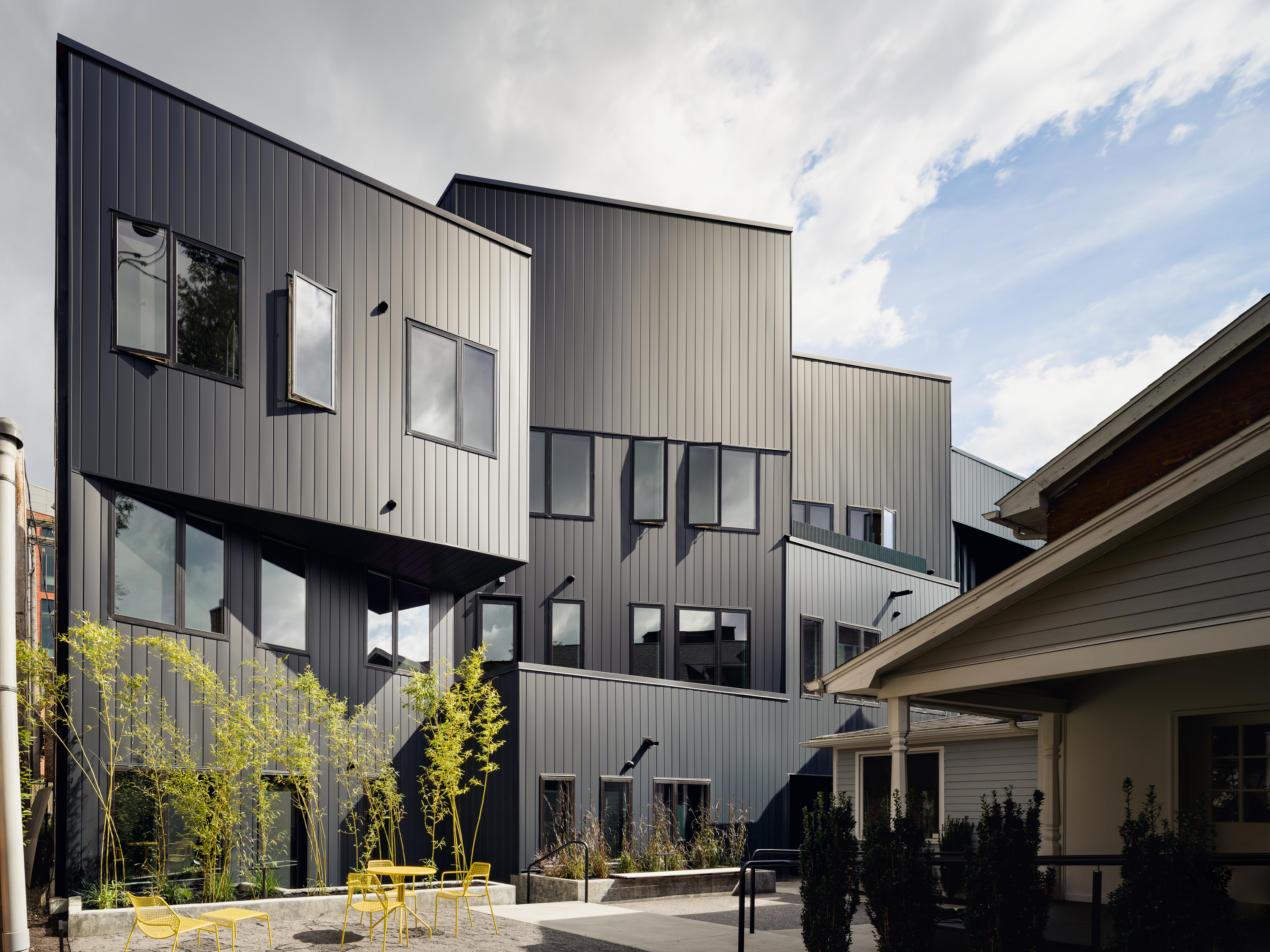Using Metal to Achieve Aesthetics and Performance
Single-skin metal pans offer a versatile, durable, and flexible option for sustainable construction
Sponsored by Metal Construction Association
Single-skin metal panels are versatile, durable, and aesthetically flexible component architects can leverage to create beautiful, durable, and sustainable commercial products. The presentation will explore two primary types of single-skin metal panels: Roll Formed and Custom panels. Roll Formed panels are produced by passing metal sheets through rollers to achieve the desired shape and size, making them cost-effective and efficient. Custom panels are tailored to specific design requirements, offering architectural aesthetics and functionality flexibility. Additionally, this presentation will explore many applications and provide an overview of the various metals available for metal panels, including copper, stainless steel, zinc, and aluminum.
In this course, we will delve into the world of single-skin metal panels. We’ll start by comparing roll-formed and custom-designed panels, focusing on their manufacturing methods, design flexibility, and use cases. Roll-formed panels are produced by continuously bending metal sheets, offering an economical and standardized approach. On the other hand, Custom Designed panels are crafted to meet specific architectural requirements, allowing for more unique and flexible designs.
We’ll also examine different metals used in these panels, such as aluminum, steel, and copper, discussing their origins, performance, and effects on durability and aesthetics. Understanding these materials will help you make informed choices for your projects. Additionally, we’ll highlight the health and safety benefits of single-skin metal panels, including their role as high-performance rain screens, sunscreens, and physical barriers. Finally, we’ll look at real-world examples to show how these panels can create durable and visually captivating architectural designs.
This course is designed to provide information on all types of porous pavements, including their differences, similarities, maintenance plans, and general benefits. By course completion, the learner should be equipped to decide which porous paving systems are best suited for their projects based on cost, maintenance, aesthetics, ease of installation, functionality, and municipal requirements. This course will also teach you how to calculate LEED points for their projects through the benefits of porous paving.

Photo courtesy of Adobe
The Metal Construction Association brings together a diverse industry for the purpose of expanding the use of metal in construction through marketing, research, technology, and education. MCA member companies gain tremendous benefit from association activities that focus on research, codes and standards, market development, and technical programs. www.metalconstruction.org
Originally published in Architectural Record
Originally published in October 2024
LEARNING OBJECTIVES
- Compare and contrast two types of single skin metal panels: Roll Formed and Custom designed.
- Identify the many types of metals that can be used for single skin metal panels, their origin, and performance attributes.
- List the occupant health and safety benefits single skin metal panels can provide by offering high performing rain screen, sunscreens, and a physical barrier from the elements.
- Describe various real-world examples of how specifying single skin metal panels can support architects’ vision for both durable and aesthetically unique projects.











